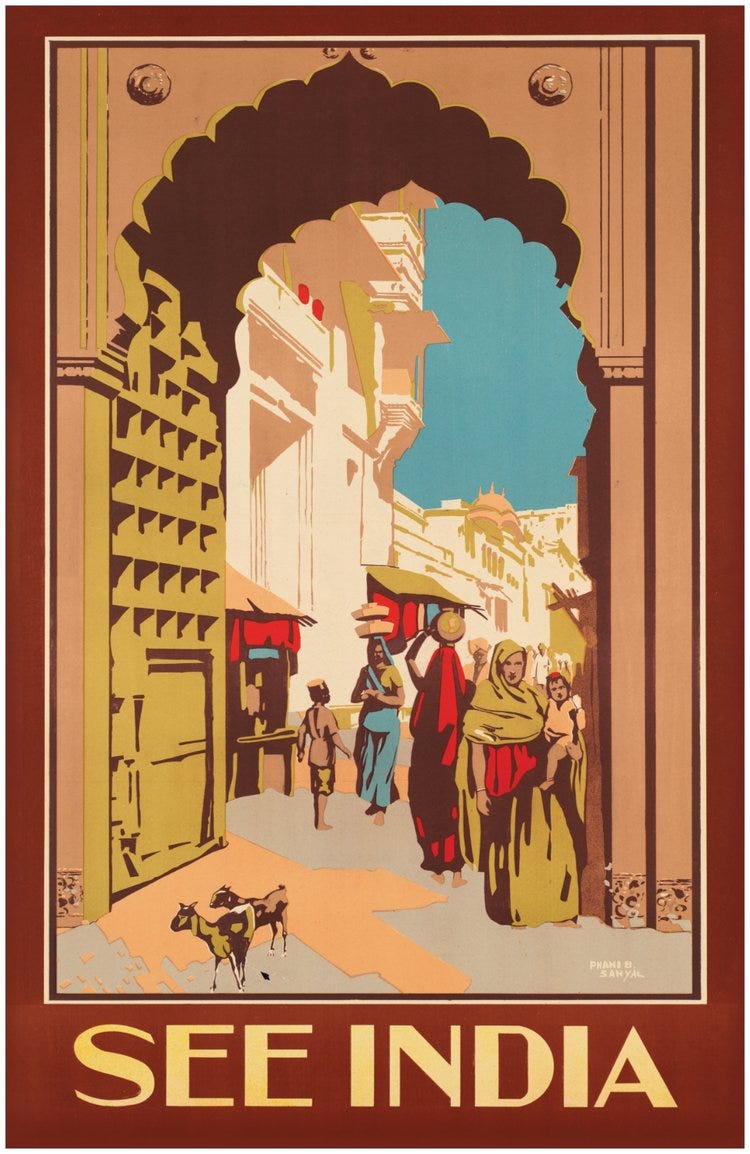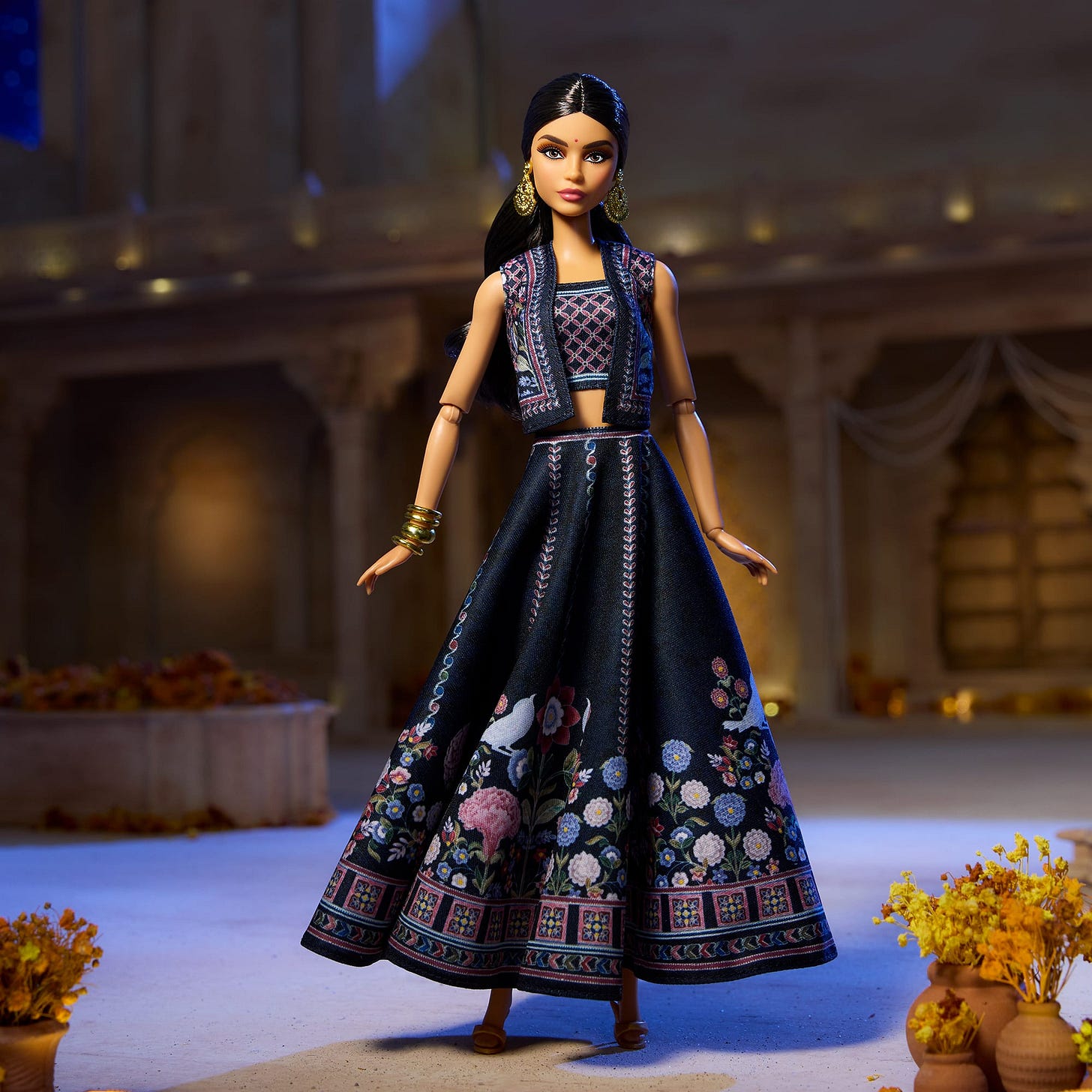Welcome to the Brown History Newsletter. If you’re enjoying this labor of love, please do consider becoming a paid subscriber. Your contribution would help pay the writers and illustrators and support this weekly publication. If you like to submit a writing piece, please send me a pitch by email at brownhistory1947@gmail.com.
Don’t forget to check out our SHOP and our Podcast.

Recommended Reads:
The Diwali Barbie Dilemma: Progress or Profit?
When Mattel unveiled their Diwali Barbie this October—a doll adorned in a designer outfit by Anita Dongre, steeped in lotus motifs and vivid hues—the release aimed to make waves. The doll is marketed as an emblem of Indian beauty and strength, celebrating the Festival of Lights. Yet, for me, this latest iteration of Barbie doesn’t quite sit right. It’s not the doll itself that stirs unease, but rather what it represents—a calculated campaign to cash in on identity and culture under the guise of empowerment.
Diwali Barbie raises an uncomfortable question: Is this doll a meaningful symbol of South Asian representation, or are we being drawn into yet another shiny, corporate illusion?







